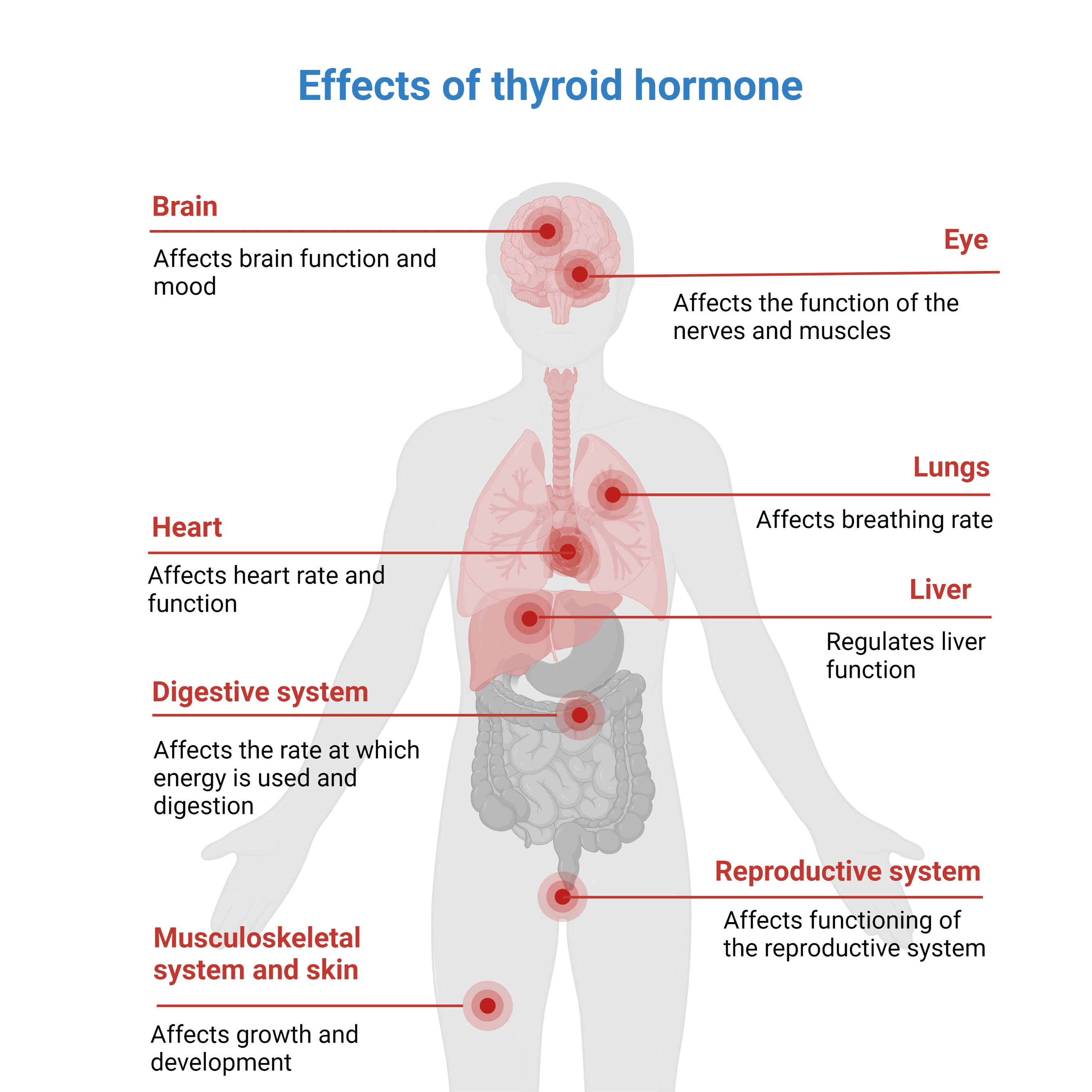
Thyroid Hormone Imbalances & MET Therapy
Introduction
When it comes to our bodies, many functioning systems help the body regulate its temperature, provide mobility and stability when in motion, and protect the host from pathogens that enter inside to cause havoc. One of the systems that helps the body is the endocrine system, which produces many hormones to keep the body functioning properly. The thyroid, a small, butterfly-shaped organ at the base of the neck, produces the hormones in the body. The thyroid helps regulate hormone production; however, when pathogen factors affect the body’s hormonal production, it can lead to musculoskeletal pain and dysfunction. Today’s article examines how the thyroid produces hormones, how hormone imbalances are connected with musculoskeletal pain, and how MET therapy can help restore hormone imbalances from affecting the body in the future. We utilize information about our patients to certified medical providers using soft tissue therapies like MET to reduce musculoskeletal pain associated with hormonal imbalances. We encourage patients by referring them to associated medical providers based on their diagnosis while supporting the fact that education is a marvelous way to ask our providers the most interesting questions at the patient’s acknowledgment. Dr. Alex Jimenez, D.C., incorporates this information as an educational service. Disclaimer
How Does The Thyroid Produce Hormones?
Do you feel muscle weakness or pain in certain parts of your body? Do you feel out of breath after walking for a short distance? Or do you feel sluggish throughout the entire day? When many individuals are dealing with these numerous issues, it could be due to their hormones being imbalanced from their thyroids. When it comes to the body, the endocrine system is the mastermind of producing different hormones for the body to help regulate all the biological processes. One of the vital organs of the endocrine system is the thyroid. Studies reveal that the thyroid is an endocrine gland located in the inferior anterior neck of the body and produces T4 and T3 hormones for the body to function properly. The thyroid hormones affect many of the vital organs and body tissues as they help with the following:
- Cardio output and increased resting heart rate
- Increases BMR (basal metabolic rate), heat production, and oxygen consumption
- Stimulates resting respiratory rate and the nervous system
- Plays a role in reproductive health and other endocrine organ function
Additional studies have revealed that thyroid hormones help control the body’s metabolism, growth, and other bodily functions while having a casual relationship with the HPT (hypothalamic-pituitary-thyroid) axis. What this relationship does is that it makes sure that the body is working properly in any environment. However, when unwanted pathogens start to affect thyroid hormone production, it can cause a hormone imbalance and lead to unwanted pain-like symptoms in the vital organs and musculoskeletal tissues.
Hormone Imbalances & Musculoskeletal Pain
When unwanted pathogens are associated with environmental factors affecting the body, it can lead to pain-like symptoms that can lead to musculoskeletal pain. In the book, “Clinical Applications of Neuromuscular Techniques,” written by Dr. Judith Walker DeLany, L.M.T., and Leon Chaitow, N.D., D.O., stated that there is a connection between hormonal imbalances and musculoskeletal pain as there are many environmental factors that can influence how much or how little hormone production is being produced from the thyroid. The book also mentions that some of the clinical signs of thyroid hormone deficiency include:
- Dry skin and thinning hair
- Unnatural fatigue
- Unexplained weight increase
- Aching muscles
- Mental confusion
When the body is dealing with hormone imbalances associated with musculoskeletal pain, studies reveal that symptoms of fatigue, anxiety, irritability, and increased oxidative stress can cause the muscular tissues and ligaments to be weak and cause overlapping risk profiles when the body is in motion. To that point, hormone imbalances could lead to muscle and joint pain associated with myofascial trigger points and muscle shortness.
Finding Hormonal Harmony- Video
Have you been experiencing muscle or joint pain? Do you often feel anxious or irritable constantly? Or have you noticed that you are extremely sensitive to the cold? Many of these pain-like issues are signs and symptoms associated with hormone imbalances in the body and can lead to musculoskeletal pain. The body needs hormones to help regulate body temperature, control the body’s metabolism, and help stimulate the endocrine and body systems. Hormones are secreted from the thyroid and travel to the important muscles, organs, and tissues through the bloodstream to assist and help each body section function properly. When pathogens start to disrupt hormone production, the thyroid can overproduce or underproduce hormone secretion and cause many overlapping risk profiles to the body and musculoskeletal system. Fortunately, there are many ways to regulate hormones and reduce the effects of musculoskeletal pain. The video above explains that increasing certain vitamin intake, eating healthy, whole-nutritional foods, and getting adequate exercise and sleep can regulate hormone production and reduce the effects of musculoskeletal pain. These various treatments can be combined with therapy to help realign the body and restore it naturally.
MET Therapy Restoring Hormone Imbalances
Many available therapies can reduce the effects of hormonal imbalances associated with musculoskeletal pain. Treatments like MET (muscle energy techniques) allow many pain specialists to use soft tissue techniques to reduce pain-like symptoms and will enable the body to restore itself naturally. Research studies have revealed that soft tissue therapies like MET can reduce pain, improve body function, and reduce disability. MET therapy can be combined with nutritional foods, hormone therapies, and bodywork strategies that can help regulate hormone production in the thyroid. When a person starts to go to treatment for any ailments affecting their body, it allows these individuals to be more mindful of what is happening to their bodies and make small meaningful changes to their health and wellness.
Conclusion
When it comes to maintaining the body’s health and wellness, it’s important to ensure that unwanted pathogens don’t start affecting thyroid hormone production. The thyroid is a small gland located at the base of the neck that secretes out hormones to the rest of the body. When the thyroid over or under-produces hormones in the organs, muscles, and tissues, it can lead to pain-like symptoms that affect the body’s system and potentially lead to musculoskeletal disorders. Treatments like MET therapy combined with nutritional whole foods and exercises can reduce the effects of hormone imbalances associated with musculoskeletal disorders. This amazing combination allows the body to heal naturally and allows the individual to be pain-free.
References
Armstrong, Maggie, et al. “Physiology, Thyroid Function – Statpearls – NCBI Bookshelf.” In: StatPearls [Internet]. Treasure Island (FL), 13 Mar. 2023, www.ncbi.nlm.nih.gov/books/NBK537039/.
Chaitow, Leon, and Judith Walker DeLany. Clinical Applications of Neuromuscular Techniques. Churchill Livingstone, 2003.
Day, Joseph M, and Arthur J Nitz. “The Effect of Muscle Energy Techniques on Disability and Pain Scores in Individuals with Low Back Pain.” Journal of Sport Rehabilitation, May 2012, pubmed.ncbi.nlm.nih.gov/22622384/.
Shahid, Muhammad A, et al. “Physiology, Thyroid Hormone – StatPearls – NCBI Bookshelf.” In: StatPearls [Internet]. Treasure Island (FL), 8 May 2022, www.ncbi.nlm.nih.gov/books/NBK500006/.
VandeVord, Pamela J, et al. “Chronic Hormonal Imbalance and Adipose Redistribution Is Associated with Hypothalamic Neuropathology Following Blast Exposure.” Journal of Neurotrauma, 1 Jan. 2016, www.ncbi.nlm.nih.gov/pmc/articles/PMC4700394/.









